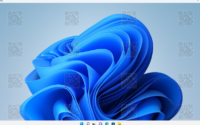Compare the Citrix On-Premises VDI vs Citrix DaaS Features Part I
If you are a Citrix customer, a pre-sales professional, an influencer, or a decision maker of the Citrix VDI roadmap, this article may help you to take an informed decision about the Citrix Features. As you may be aware almost 99% of the enterprise have already migrated some of their workloads to Cloud and there are a lot of benefits in terms of features available if you move to the Citrix Cloud.
This article is divided into two parts, in the first part of the article I will discuss the Features which are available both in On-Premises and Citrix Cloud Service-based deployment, and in the 2nd part of the article, I will discuss the features which are not available in either any of them.
Before I start comparing Citrix On-Premises deployment and Citrix DaaS, let’s see what is DaaS.
What is DaaS?
Desktops-as-a-service (DaaS) provides access to virtual desktops via the cloud to any device at any location. Employees using the DaaS access the virtual desktop either through a browser or an app downloaded on their device. DaaS appeals to businesses because it is IT-friendly and scalable. Workstations are easily added or removed as companies grow or employees leave. There is no need to buy or reconfigure hardware for new employees, simply add new users as needed. Your DaaS provider can also instantly apply updates and upgrades to the virtual desktops.
Let’s see some of the important benefits of migrating in to cloud.
Virtual desktop infrastructure (VDI) revolutionized the way organizations worldwide deliver desktop capabilities. Today, however, many of those same organizations are moving to a hybrid or cloud services model of DaaS delivery. That doesn’t mean they are leaving behind their on-premises investment. But for the future, they are looking to the cloud. Why?
- To improve resiliency
- Simplify management
- Improve agility.
Let’s see what product features which you will get in Citrix On-Premises deployment as well if you opt for Citrix Cloud Service deployment.
Common Features which are available in both the on-premises and Citrix cloud services (DaaS) are as follows:
1. Virtual applications and desktops: Virtual application and desktops is the basic feature of Citrix which is available both on-premises and in the Citrix Cloud Platform.
What is desktop virtualization?
Desktop virtualization is the process of taking creating a software-based copy of a desktop environment and OS that can be accessed away from the office. Virtualization facilitates greater agility and productivity in the workplace as employees have easier access to company resources from any location.
What is application virtualization?
Application virtualization is a technology that allows users to access applications from computers other than the one on which the app was originally installed. Although the application is not installed on the computer using it, the app still has full functionality, and the user experience is the same.
Verdict: Virtual Apps & Desktop Services are available both on-premises and in Cloud.
2. HDX user experience optimization: Citrix is known for its HDX protocol which is built on top of the Independent Computing Architecture (ICA) remoting protocol, it’s used by global enterprises to support millions of users. Citrix HDX is a suite of proprietary technologies that deliver a high-definition experience to users of virtual desktops and virtual applications. HDX is designed around three technical principles: intelligent redirection, adaptive compression, and data de-duplication. Applied in different combinations, they are designed to:
- Optimize the user experience and IT control
- Decrease bandwidth consumption
- Increase user density per hosting server
What are the three technical principles behind HDX technology?
- Intelligent redirection
Intelligent redirection examines screen activity, application commands, endpoint devices, and network and server capabilities to instantly determine how and where to render an application or desktop activity. Rendering can occur on either the endpoint device or the hosting server.
Client redirection leverages processing power on endpoints, if available, to free up the server to handle other processes or more users. Device redirection intercepts peripherals such as webcams, printers, scanners, digital pens, and 3D mice at a local level to allow users to interact with these devices in sessions.
- Adaptive compression
Adaptive compression is a core intellectual property of the ICA protocol which allows rich multimedia displays to be delivered on thin network connections. HDX first evaluates variables such as the type of input, device, and display (text, video, voice, multimedia). Next, it chooses the optimal compression codec and the best proportion of CPU or GPU utilization. It then intelligently adapts based on each unique user or session.
- De-duplication of network traffic
De-duplication of network traffic reduces the aggregate data sent between client and server by taking advantage of repeated patterns in commonly accessed data such as bitmap graphics, documents, print jobs, and streamed media. Caching these patterns allows only the changes to be transmitted across the network, eliminating duplicate traffic. HDX also supports the multicasting of multimedia streams, where a single transmission from the source is viewed by multiple “subscribers” at one location, rather than a one-to-one connection for each user.
Verdict: HDX is available in both on-premises and in Cloud Service-based deployments.
3. Optimization for Microsoft Teams: The optimization for Microsoft Teams includes VDA-side HDX services and an API to interface with the Microsoft Teams-hosted app to receive commands. These components open a control virtual channel (CTXMTOP) to the Citrix Workspace app-side media engine. The endpoint decodes and provides the multimedia locally, moving the Citrix Workspace app window back into the hosted Microsoft Teams app. Authentication and signaling occur natively on the Microsoft Teams-hosted app, just like the other Microsoft Teams services (for example chat or collaboration). Audio/video redirection doesn’t affect them. The CTXMTOP is a command and control virtual channel. That means that media isn’t exchanged between the Citrix Workspace app and the VDA. Only client-fetch/client-render is available. To understand more details on this you can watch this video on YouTube here.
Verdict: Optimization for Microsoft Teams is available in both on-premises and in Cloud Services-based deployments.
4. Citrix Provisioning: Citrix Provisioning is software streaming technology that delivers patches, updates, and other configuration information to multiple virtual desktop endpoints through a shared desktop image. It centralizes virtual machine management while reducing the operational and storage costs of a virtualized desktop environment. I have written a 3 part blog series for the deployment of Citrix Provisioning Service in Azure. You can find the details below.
- 1st part of this blog series can be found here.
- 2nd part of this blog series can be found here.
- 3rd part of this blog series can be found here.
Verdict: Citrix Provisioning is available in both on-premises and in Cloud Services-based deployments.
5. Citrix App Layering: Citrix App Layering is a Windows Operating System and application management solution designed for on-premise private clouds and public clouds. Citrix App Layering’s underlying technology, called layering, enables all components of a virtual machine to be independently assigned, patched, and updated. This includes the Windows OS, applications, and users’ settings and data. Built around this core innovation is a management system that encompasses application conflict resolution, image creation, application assignment, and integration technologies that can be used for any virtualization platform. The primary goal of Citrix App Layering is to create a simple, easy-to-manage, application environment that enables anyone in IT to manage Windows and Windows apps using one interface and one seamlessly integrated technology, regardless of the underlying hypervisor or cloud infrastructure. By separating the applications from the operating system, and separating the personalization (unique) changes for the machine from the operating system, you create a model where IT has one copy of any given OS or application, regardless of the number of desktop or session host configurations.
Verdict: Citrix App Layering is available in both on-premises and in Cloud Service based deployments
If you want to see more details about Citrix App Layering Please Click Here.
6. Citrix Policies Advanced policy controls: Policies are a collection of settings that define how sessions, bandwidth, and security are managed for a group of users, devices, or connection types.
You can apply policy settings to physical and virtual machines or to users. You can apply settings to individual users at the local level or in security groups in an Active Directory. The configurations define specific criteria and rules. If you don’t specifically assign the policies, the settings are applied to all connections.
Citrix Advance Policy Infrastructure consists of powerful expression language. The expression language can be used to define rules in a policy, define various parts of Action, and other entities supported. The expression language can parse through any part of the request or response and also enables you to look deeply through the headers and payload. The same expression language expands and works through every logical module Citrix ADC supports.
Verdict: Citrix Policies and Advance Policy Control is available in both on-premises and in Cloud Service based deployments
7. Citrix Director for monitoring: Director is a monitoring and troubleshooting console for Citrix Virtual Apps and Desktops.
Verdict: Citrix Director is available in both on-premises and in Cloud Services-based deployments.
That’s all about it. In the next part of the article, I am going to discuss what features are not available in Citrix On-Premises but are available in Citrix Cloud-based deployment. Stay tuned.


